

Museums, unlike dreams and books, are more realistic because of the physical sensation (if we are allowed to touch things) and the emotions flying inside the room—a space full of mysterious histories. Remembering how museums evoke a particular feeling makes me recall last year, when I visited the Metropolitan Museum of the Philippines and the Cebu Museum. They are carefully stored in the back of my head until now. I’ll be telling you today about the arts in these museums and my own experience—both physically and emotionally. If you are so sophisticated when it comes to art, especially artifacts and paintings, then you’ve found the right column.
This is "An Archive from The Archive: The Artistry in Metropolitan Museum and Cebu Museum."
TRAVELING BACK TO THE PAST WITH BANKSY'S ART IN METROPOLITAN MUSEUM OF MANILA

Now called "The M," this museum located in the heart of Bonifacio Global City is established to become a space for all people—no matter what their background is—who are sophisticated and passionate about art and its concept. This museum was founded in 1976 to preserve the beautiful culture and history of Filipinos through masterpieces and artifacts, advocating a strong connection between Filipinos and history, while envisioning to be the most famous museum in the future—where local and international artists have the freedom of discourse regarding a particular art.
When I visited the museum, we were able to enter for free. But as of this year, I heard that The M has imposed a ₱350 entrance fee for visitors, which would help them have resources for future exhibitions and programs designed for the people. The museum features a lot of works from talented artists—locally and internationally—and also offers workshops related to art and exhibitions. The works displayed inside are forms of legacy that artists wanted to preserve and share with the world about their artistic existence. In all corners of the museum, you can find and feel the long years of making those arts, celebrating the artists through your experience, and sharing understanding with others indirectly in the world of art and history.
Toxic Mama Mary, 2003

Made by a pseudonymous artist in England named Banksy—who until now remains secretive and whose identity is still hidden—Mama Mary is a piece of artwork that challenges our idea of organized religion and its concept. Toxic Mama Mary is another verse of Banksy, since most of his/her work is clean, but this one looks like ink is dripping like blood. The artwork portrays the Virgin Mary as a mother feeding her infant, like what a real mother does. But, in a closer look, Mary is feeding her baby with toxic milk, symbolized by the skull and crossbones in the milk bottle. This piece remains powerful and debatable—so much so that no one would dare to buy it.
With all his original paintings vandalized all over the world, like the Falling Shopper in London and Well Hung Lover in Bristol, Banksy successfully brought the message he wanted to say to the whole world. Each painting, which appears out of nowhere in certain streets, holds meaning and discourse—especially on social and political issues. From marital issues to human trafficking, Banksy didn’t skip a single issue and told the world about hard truths and wars we are still in.
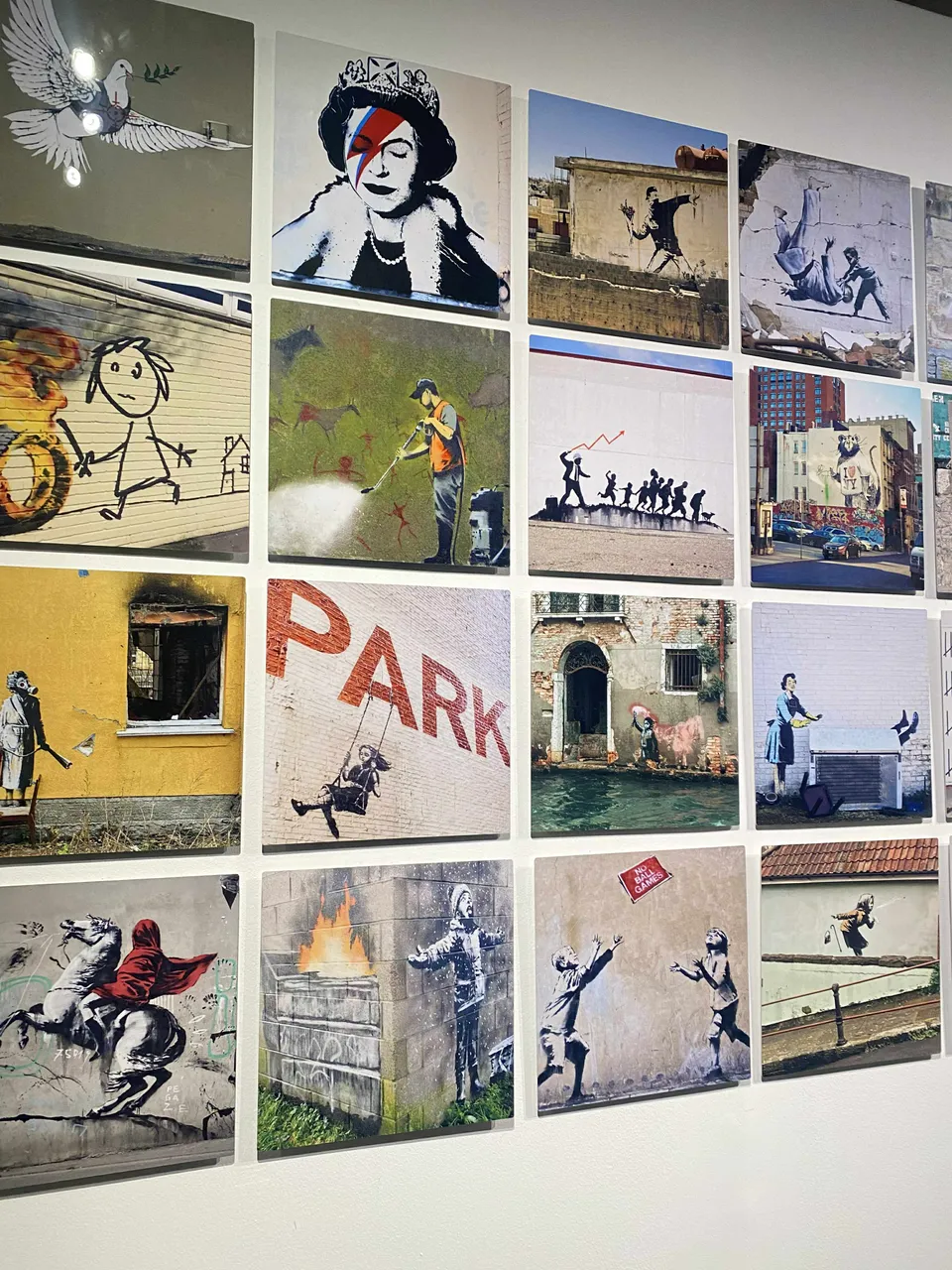

In the picture, some of the works featured are: Dove of Peace, The Queen and Ziggy Stardust, Rage, Flower Thrower, Kid Rolling a Burning Tire, Cave Painting Removal, Stop and Search, Liberté Égalité, and Slave Labour—each holding significance to the opinion of the people. And since it is impossible to bring Banksy’s original work to the Philippines, the Metropolitan Museum gathered skilled artists to recreate the work of Banksy and make it accessible for those who cannot afford visiting all artworks in different places.
Hula-Hoop Girl and Pie Face
On October 14, 2020, in Rothesay Avenue and Ilkeston Road, Nottingham, England, a painting appeared out of nowhere on a wall—a girl hula-hooping with a tire. There was also a real bike with missing wheels, chained to a post, which many believed appeared together with the artwork. It is interpreted as happiness after rock bottom, where the girl in the picture is happily playing with the tire—hula-hooping despite the COVID-19 pandemic.
In London, 2006, a portrait of an 18th-century man—high class and formal—was painted by Banksy. This one is considered a portrait unlike the others and is part of Banksy’s Crude Oil series. The pie and cream look real, according to those who witnessed the work in real life. While it appears funny for the audience, it holds a simple yet powerful meaning: no position is too high to escape the world’s cruel jokes. Regardless of your status, a pie and full cream can bring you down like a clown. This portrait makes viewers think twice about the image they are portraying, advocating the building of lines between position and humility.


Our visit to The M was all about Banksy's work and exhibition. Not only did I learn about his past works, but I also learned about new political and social issues still happening today—through Banksy’s masterpieces. That was, by far, my most favorite art style among the works I have seen.
Now, let’s take a look at Cebu Museum—the 16th component museum of the National Museum of the Philippines.



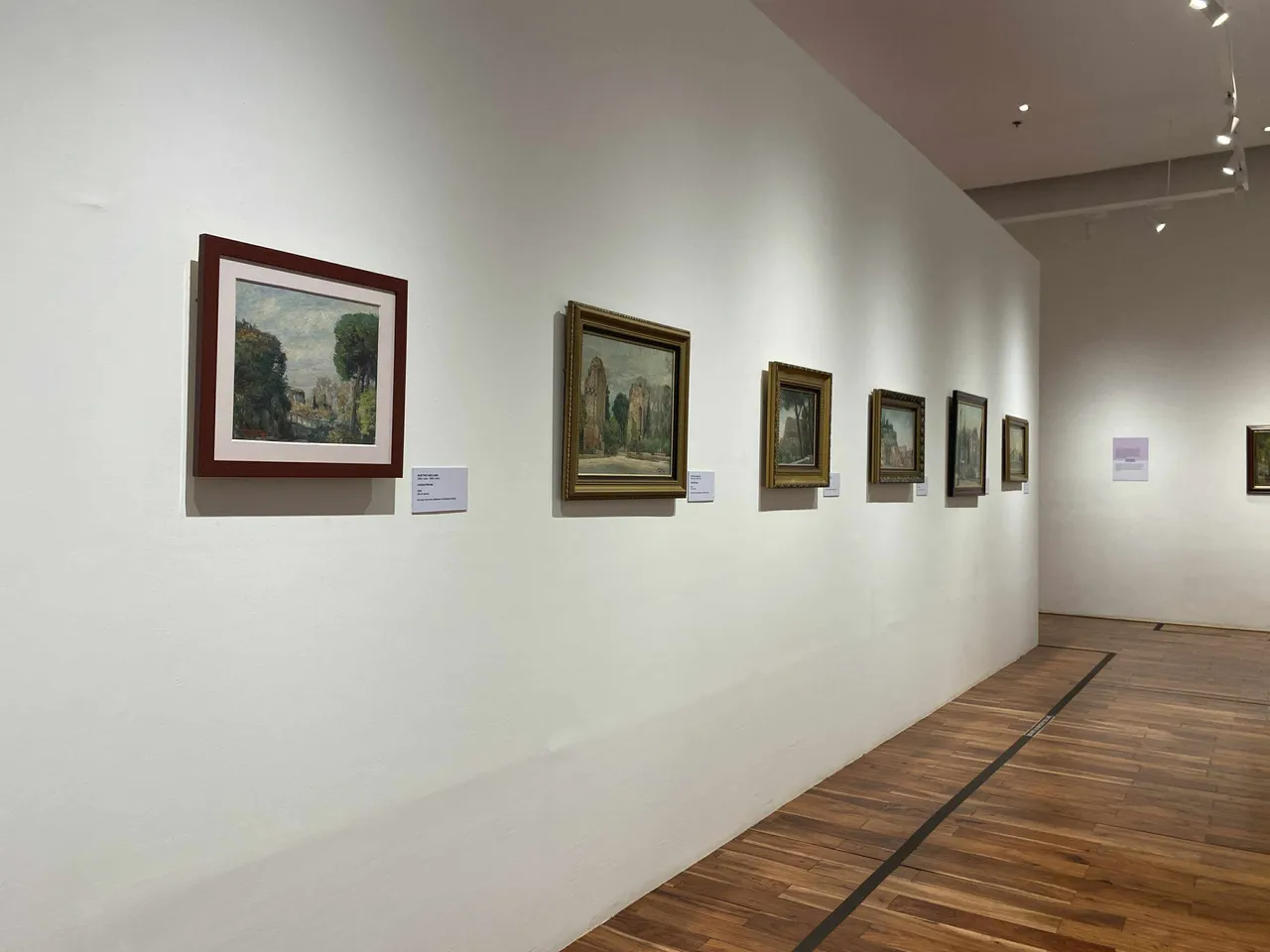
In the heart of Cebu City, the National Museum of the Philippines – Cebu was finally established as a museum building in 2023 in Plaza Independencia, after a long history of being a customs house for 94 years, a bombing survivor during World War II, and as Malacañang sa Sugbo. NMP-Cebu is not only an archive or storage room, but a keepsafe of rich heritage, history, and important cultures that enrich Filipino identity and celebrate diversity. It displays cultural artifacts, archaeological remains, and historical treasures that serve as important reminders of Philippine history—and of the people involved heroically.


Kinaiyahan: Cebu’s Natural Wonders
This gallery features endemic species and natural wonders found in Cebu.
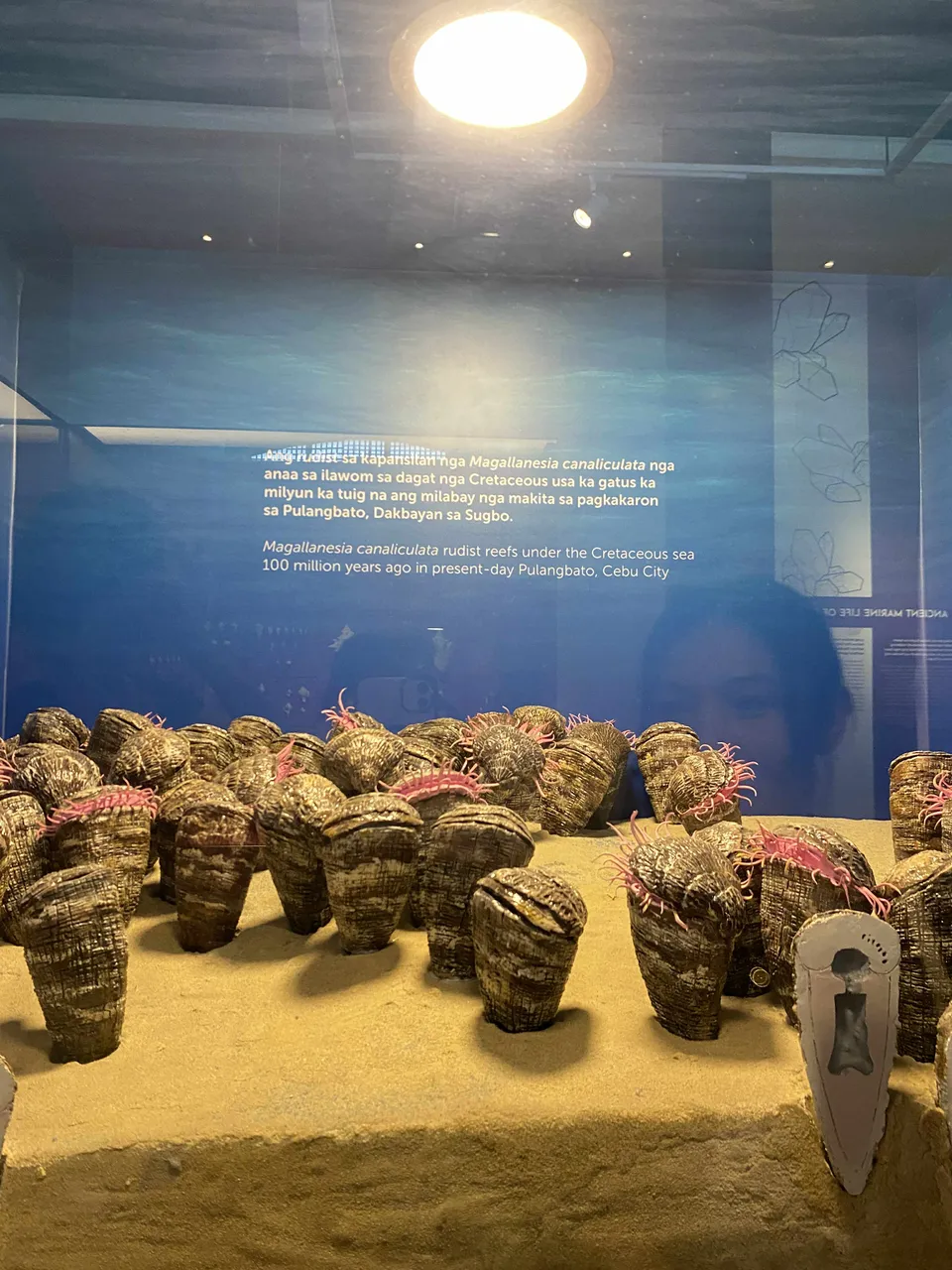
One of the fossils featured is the Magallanesia canaliculata, a rudist or a type of extinct clam discovered by a group of Filipino and Japanese paleontologists. Over 100 million years ago, this clam lived in the Cretaceous Sea and thrived in tropical marine environments. At present, this fossil can be found in NMP-Cebu but was initially discovered in Polambato, Cebu.

Gentle Giants
Whale sharks (Rhincodon typus) are considered the biggest type of shark/fish—growing 40 feet or more—in the marine environment up until today. The International Union for Conservation of Nature declared the whale shark species as endangered in 1998. They are often seen roaming around Cebu, which makes the city one of the top places where whale sharks are present—beside Leyte, Manila Bay, and Sorsogon. Whale sharks can be seen, for instance, in Oslob and Badian in Cebu, where attractions offer canyoneering to meet this friendly marine creature. People are also urged to be protectors of this species and help lengthen their existence through sustainability and marine protection.
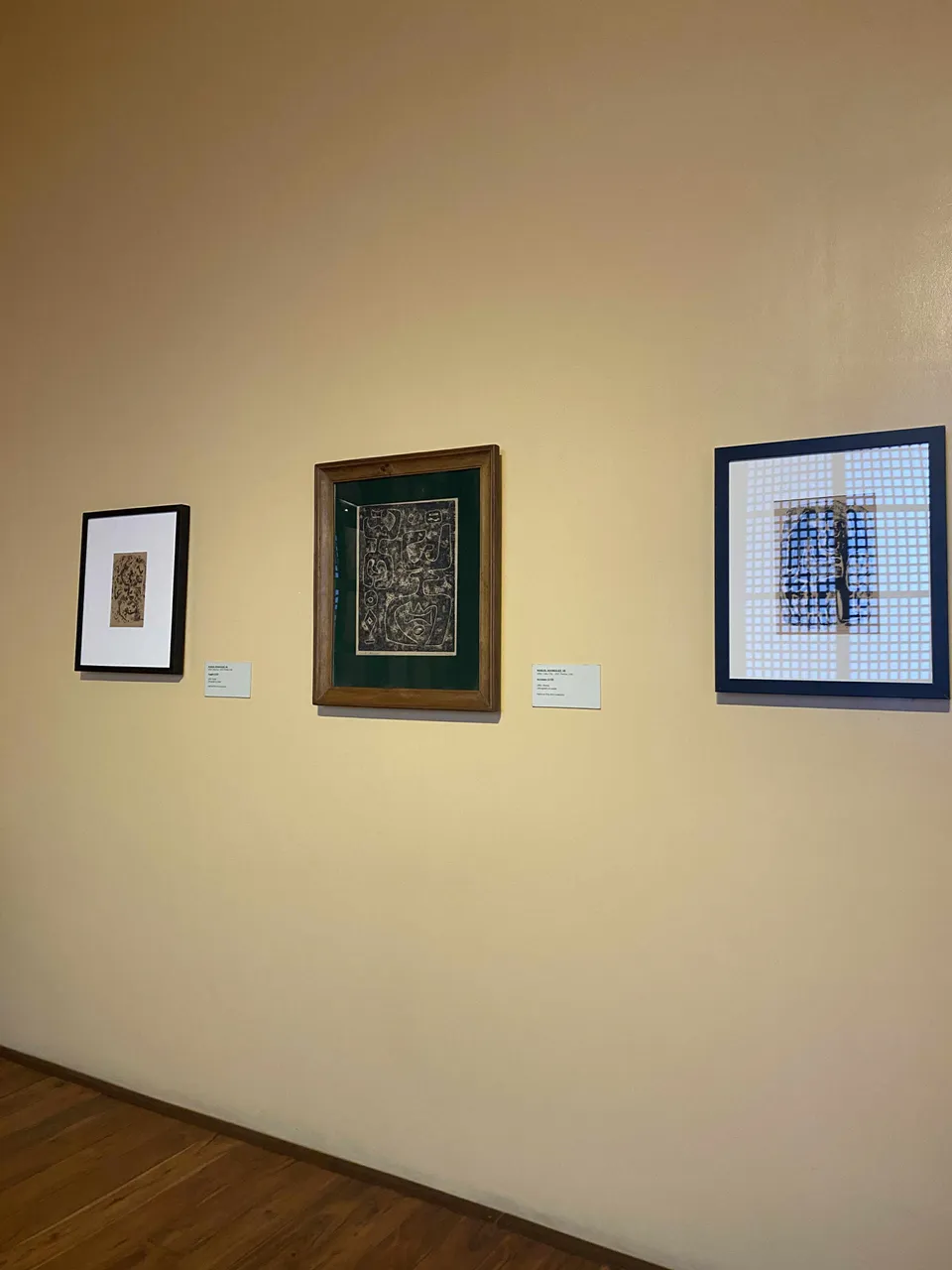
NMP-Cebu is also home to different paintings showcasing the talent of local artists and masterpieces that tell the rich history of Cebu City. Such are the works of Martino Abellana and Elmer Borlongan, titled Dark Symphony and The Battle of Mactan.

Beethoven’s Dark Symphony (1968)


Created by Martino Abellana, known as Noy Tinong, the Dean of Cebuano Painters and called the Fernando Amorsolo of the South, this painting evokes strong emotion and artistic mastery.
The Battle of Mactan
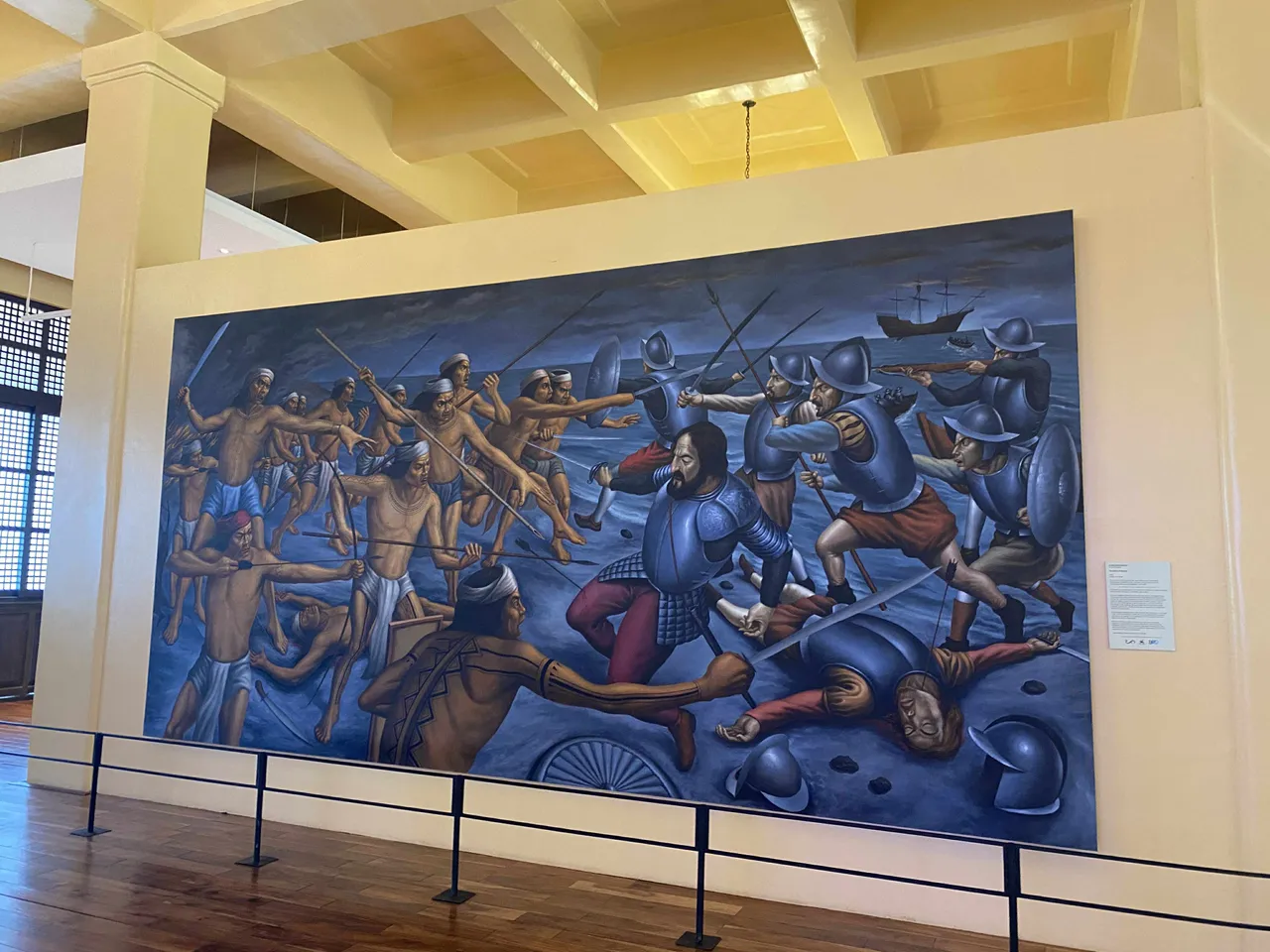
This year marks the 505th anniversary of Magellan’s circumnavigation around the world, and this timeline holds unforgettable history for Filipinos. Elmer Borlongan, born in 1967, painted the famous Battle of Mactan, which commemorates one of the most historical events in the country. The artwork shows the determination and resistance of Filipinos against foreign domination, emphasizing the forces of Lapu-Lapu and Portuguese explorer Ferdinand Magellan, who led the Spanish forces. Eventually, this battle changed the lives of Filipinos in many social and political ways.




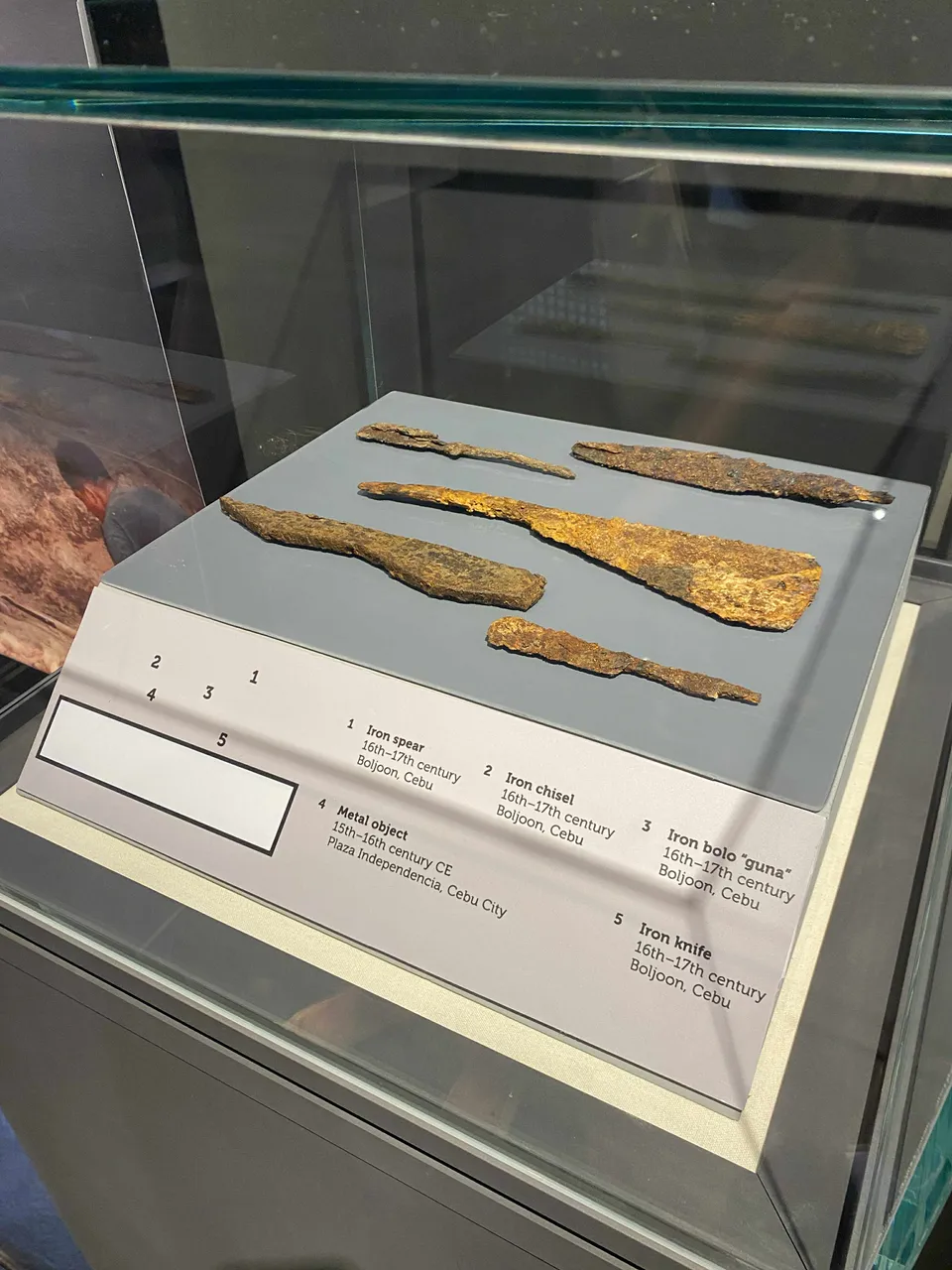
A lot of fishing vessels are also shown in the museum, which originated from different parts of Cebu. Aside from vessels, you can also witness historical pots or banga, classical paintings in different forms, rock formations, metal objects such as iron spears, iron chisels, ewers, and old guns.



The National Museum of the Philippines – Cebu is a home of various historical materials and testimonies that are significantly preserved so we never forget the past.
If you wish to visit Metropolitan Museum of Manila and NMP-Cebu, you can find them in 30th St, Taguig, Metro Manila and A. Pigafetta Street, Cebu respectively.
Thank you readers for taking time to read my blog! See you next time

